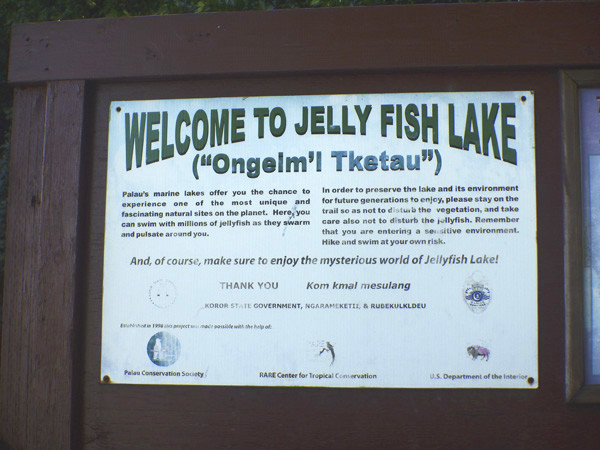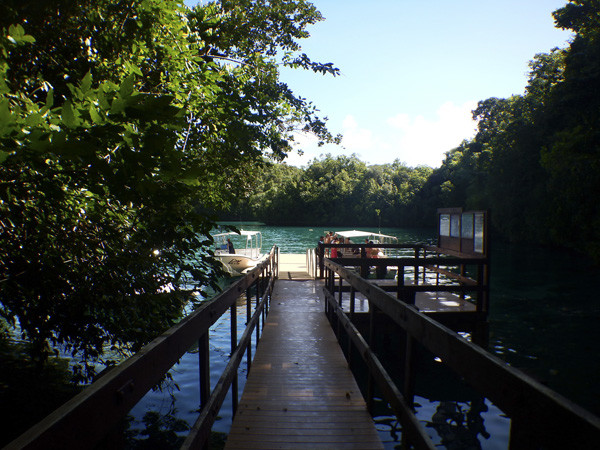Published in the Ocean Watch column, Honolulu Star-Advertiser © Susan Scott
November 30, 2015
I’m home from Palau, but as I recall my excellent two weeks of snorkeling there, one image pops out: floating mesmerized above millions of jellyfish in a landlocked marine lake.
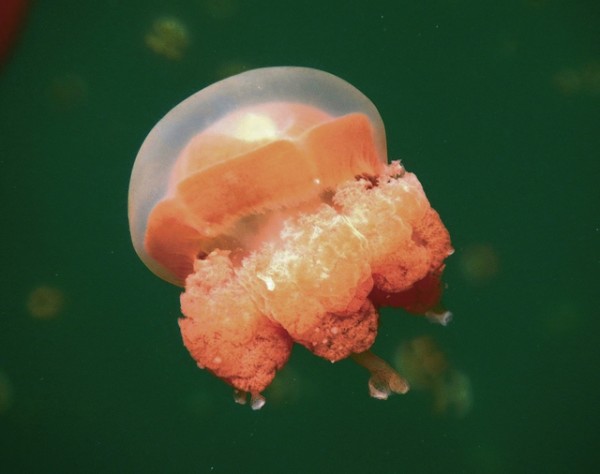 The golden jelly has eight arms, each ending in
The golden jelly has eight arms, each ending in
club like extensions that contain mild stinging cells.
©2015 Susan Scott
Called Ongeim’l Tketau (also known as Jellyfish Lake), Palau’s famous lake contains seawater that flows in and out through channels and fissures in its limestone island. As a result, the lake’s water rises and falls with the tides in the surrounding lagoon.
Jellyfish Lake is special, but not because it’s Palau’s only marine lake with jellyfish. The island nation hosts more than 50 such lakes, five containing jellyfish. All are the same species, Mastigias papua, but dissimilar enough that scientists gave them subspecies names, each honoring Palau’s five elected presidents.
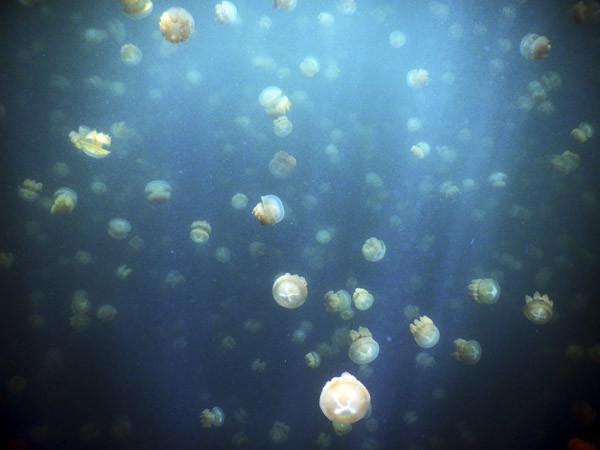
Ongeim’l Tketau, however, is the only lake open to visitors. Tourists come from around the world to swim with its mass of up to 13 million golden jellyfish migrating daily across the 14-acre lake. (Waikiki’s Hilton Lagoon is 5 acres.) It’s a myth that these jellyfish have lost their sting. True, the creatures house algae in their tissues and get carbs from the plants. But the jellies also need protein and, like their coral relatives, have small tentacles that sting and kill tiny drifting animals that live in the lake.
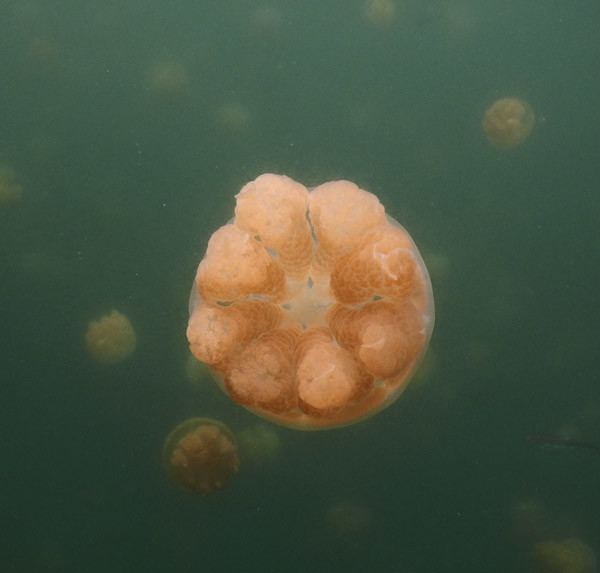
The story that the jellyfish don’t sting comes from the fact that their stinging cells, called nematocysts, are too weak to penetrate human skin except, possibly, in sensitive places such as lips. Even then most people just get a tingle. Or nothing. When an adult golden jelly, about 4 inches across, brushed my lips, I felt nothing but joy. It was like getting kissed by a mobile marshmallow.
The jellies cluster together because they follow the sun, giving their gardens the light they need to make sugars. (The creatures’ color is their algae’s color.) At night the jellyfish rest, but come morning they’re on the move again. In Ongeim’l Tketau, the jellies travel about a half-mile per day, swimming east in the morning and west in the afternoon. By stopping where shadows hit the lake’s edges, the jellies avoid their major predator, a native white anemone that grows on fallen branches and mangrove roots along the lake’s walls. At the slightest touch, the anemone stings the jellyfish and eats it.
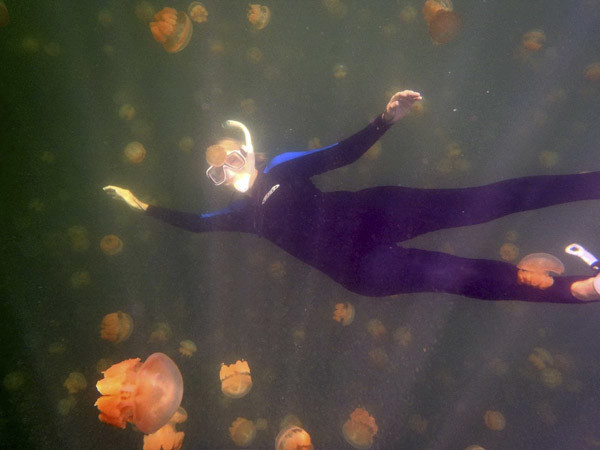
To give all their plants equal time in the sun, the pulsating creatures twirl every which way as they migrate, performing a slow-motion ballet. Watching this dance of the golden jellies while floating and breathing through a snorkel is like taking a tranquilizer. Mastigias papua etpisoni is my kind of drug.
